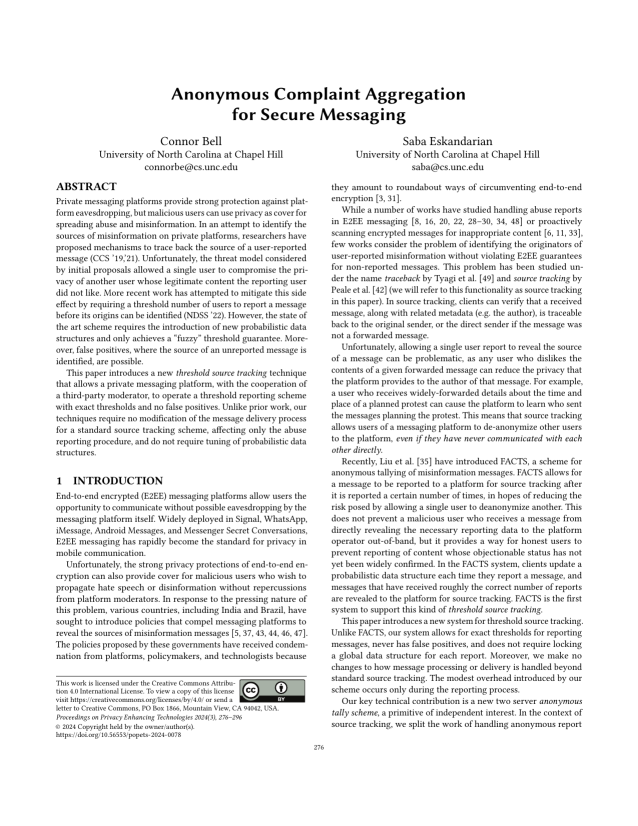Anonymous Complaint Aggregation for Secure Messaging
Authors: Connor Bell (University of North Carolina at Chapel Hill), Saba Eskandarian (University of North Carolina at Chapel Hill)
Volume: 2024
Issue: 3
Pages: 276–296
DOI: https://doi.org/10.56553/popets-2024-0078
Abstract: Private messaging platforms provide strong protection against platform eavesdropping, but malicious users can use privacy as cover for spreading abuse and misinformation. In an attempt to identify the sources of misinformation on private platforms, researchers have proposed mechanisms to trace back the source of a user-reported message (CCS '19,'21). Unfortunately, the threat model considered by initial proposals allowed a single user to compromise the privacy of another user whose legitimate content the reporting user did not like. More recent work has attempted to mitigate this side effect by requiring a threshold number of users to report a message before its origins can be identified (NDSS '22). However, the state of the art scheme requires the introduction of new probabilistic data structures and only achieves a "fuzzy" threshold guarantee. Moreover, false positives, where the source of an unreported message is identified, are possible.
This paper introduces a new threshold source tracking technique that allows a private messaging platform, with the cooperation of a third-party moderator, to operate a threshold reporting scheme with exact thresholds and no false positives. Unlike prior work, our techniques require no modification of the message delivery process for a standard source tracking scheme, affecting only the abuse reporting procedure, and do not require tuning of probabilistic data structures.
Keywords: threshold source tracking, abuse reporting, source tracking, traceback
Copyright in PoPETs articles are held by their authors. This article is published under a Creative Commons Attribution 4.0 license.

